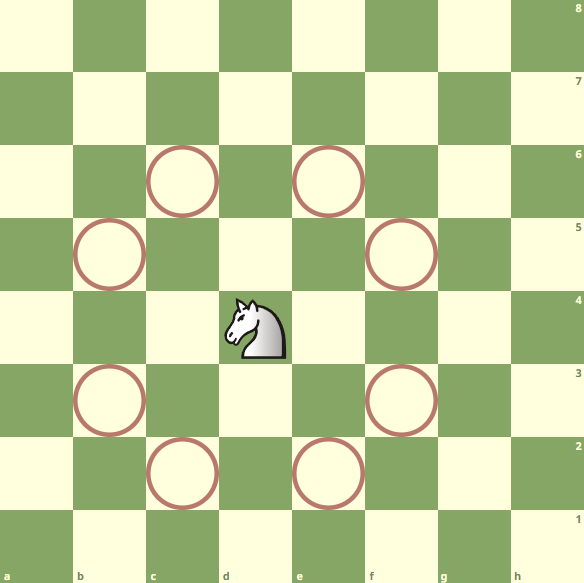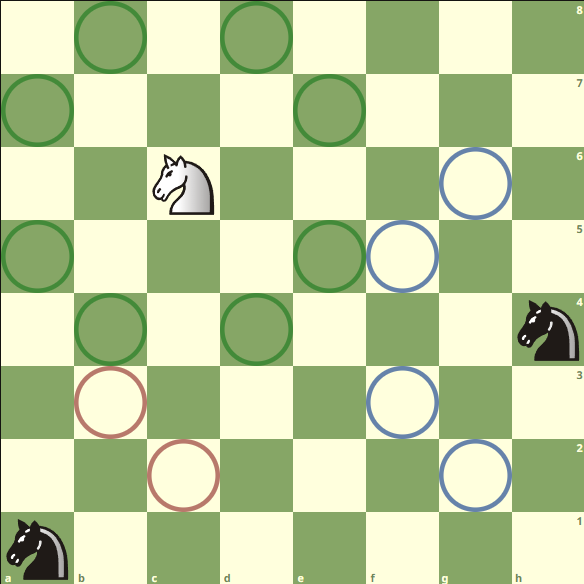The knight is the trickiest piece on the chessboard. Knight jumps have saved many losing positions and caused facepalming experiences for amateur players.
The reason for this is because it moves in a special way; it is the only chess piece capable of jumping over its counterparts. Figuring out good knight moves can win you a lot of games!
Here is how a knight moves and what are good moves to make with the piece.
How does the knight move?
Knights move in an L-shape on the chessboard, meaning it moves two squares in any direction vertically and one square horizontally, or vice versa. It is the only chess piece that isn’t blocked by its counterpart when making a move, allowing for unique possibilities.
Another way to think of knight moves apart from the “L-shape” mnemonic is to map all possible moves and think of it as a circle or octagon. A visual representation is below.

The nature of knight moves means the piece will keep moving back and forth from light squares to dark squares. When a knight is on a dark square, it can only move to a light square on its next move.
How to make good knight moves
Knights have the same relative value as bishops or three pawns, according to the basic chess metrics. But knights excel in very different positions and situations since they can jump over other pieces in closed positions, while many pawns are facing off against each other and there is little mobility on the board otherwise.
Sometimes, short distances can take a long time to cover with a knight. Due to the unique directions it travels in, moving two squares forward on a diagonal (which would be a straightforward move with a bishop) takes a whole four moves with the noble steed. Moving three squares forward in a straight line is also a time-consuming affair, eating up three moves.

The best way to make use of your knights is to put them in the middle of the board. Knights in the corner only cover two squares and knights on the side of the board only reach four–hence the saying “the knight on the rim is dim”.

On lower levels of play (and in time trouble), the tricky nature of the knight also gets added value. Knight forks (moves where you attack multiple pieces at the same time) are the leading cause of unexpected losses in fast-paced online chess games.
ncG1vNJzZmicn6mytLzOq6usZpOkunCvx56qrGeemsS0e8eormacn5rAbsDHnmSkppmctbV5zKitnmWZo3qktMSsqg%3D%3D